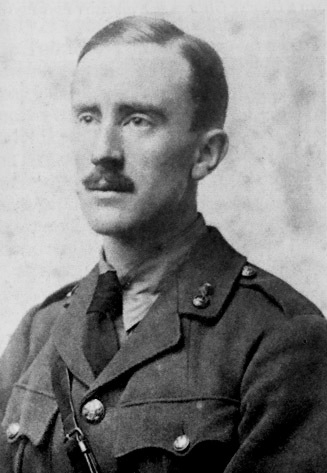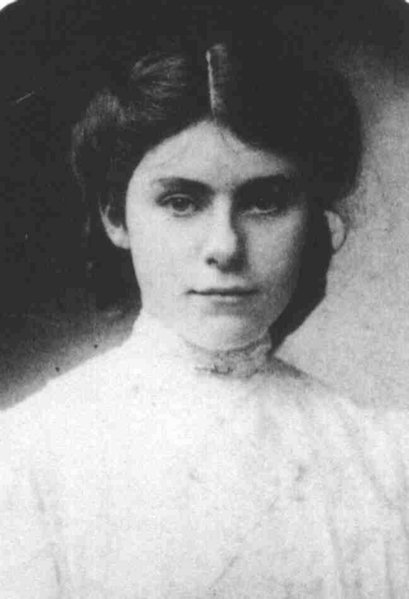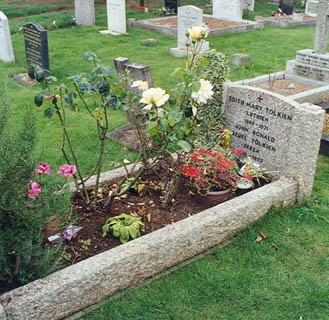The legendary novels The Hobbit and The Lord of the Rings have already withstood the test of time, confirming the legacy of J.R.R. Tolkein. However, not many readers may be familiar with Tolkien’s personal struggles when it came to marriage and the outcome.
The story is of his wife, and muse, Edith Bratt.
John Ronald Reuel Tolkien, known as Ronald in his family, met Edith, who was three years older than him, when he and his brother, Hilary, moved into a boarding house on Duchess Road in Edgbaston, where she lived. Edith and Hilary Tolkien got along very well and they frequently spent time together; however, there was a special spark between Ronald and Edith. They didn’t share the same interests but were on the same level in emotional ways.
According to the English biographer Humphrey Carpenter, she had no interest in his love of books and languages, just as he wasn’t much into her love of piano-playing, but that didn’t prevent them from smuggling food out of the kitchen and making secret feasts in Edith’s room. Their everyday adventures included visiting tea shops and throwing sugar-cubes into the hats of passers-by. Carpenter described their relationship as one that was meant to flourish, since they were both orphans who needed affection and kindness and they realized that they were capable of giving that to one another. In the summer of 1909, they fell in love.

Not everyone was happy with this romance. The guardian of Tolkien, Father Morgan, thought Edith was the reason that Ronald failed his exams, and he considered it unfortunate that his surrogate son was having a romantic affair with an older, and on top of everything, Protestant woman. He ordered him not to meet her or even talk to her until he was 21 years old. Ronald, who was not rebellious and aware that he was dependent upon Father Francis’ financial support, obeyed his demand.
At that time, Ronald was studying for a scholarship at the Oxford University, a challenge that he didn’t succeed in achieving as his young mind was presumably occupied with Edith. He failed the entrance exam and couldn’t prove to Father Francis that Edith wasn’t his main distraction regarding schooling. He recorded in his diary entry on January 1st, 1910, “Depressed and as much in dark as ever. God help me. Feel weak and weary.”
His disappointments during that period were vividly described by Tolkien himself in one of his letters to his son Michael, where he told him that he had to choose between obeying and respecting his guardian who was like a father to him and the love he felt for Edith. He continued by saying that he had never regretted his decision to wait, but he was aware that it was pretty hard on Edith. He knew that she was entirely free and hadn’t made any promise to him, having complete freedom to marry any other person. For almost three years, he didn’t write to her or see her and he felt completely devastated. He was distracted and, ultimately, failed in his primary year at college.

It can be said that Ronald was counting the days until his 21st birthday, when he could finally write to Edith. At that time, she was living with C. H. Jessop, a family friend, in Cheltenham. He declared his love for her, which as he said, never ceased, and finally asked her to marry him.
Her answer left him heartbroken. Edith replied that she was already engaged to George Field, the brother of one of her friends and that she had said “yes” to him. However, she added that her decision was one of convenience because she had believed that Tolkien no longer cared for her. Fortunately, she finished the letter saying that his words made her reconsider her feelings towards him as well as her marriage decision regarding Field.

On January 8, 1913, Tolkien traveled by train to Cheltenham where Edith was waiting for him at the railroad station. They walked and talked for hours. When the day was over, Edith accepted Tolkien’s proposal. She returned her engagement ring to Field, leaving him shocked and his family insulted.
Learning of Edith’s new plans, her guardian wrote her that although he didn’t have anything personal against Tolkien, he considered his prospects to be very poor as he didn’t have any profession or career that would provide Edith stability as his spouse.
Just before their engagement, Edith announced that she decided to convert to Catholicism and that Tolkien had insisted on her doing so. Her guardian was quite upset, for like many others of his age and class, he was strongly anti-Catholic.

In January of 1913, Edith and Tolkien were engaged in Birmingham and on March 22, 1916, they finally married at St. Mary’s Immaculate Roman Catholic Church, Warwick. With a humorous tone in another of his letters to Michael, Tolkien wrote that he admired his wife for being willing to marry an almost penniless man with no career and no higher prospects except the possibility of being a casualty in the First World War.
Read another story from us: The life story of J. R. R. Tolkien will be told in not one but two films
The friends of the Tolkien family witnessed a great affection between the two. They described their care and love as almost absurd when it came to wrapping birthday presents for each other; they had and frequent conversations, whether it was about health, house, or garden. They shared an immense love for their family and this, along with their love for each other, was the strongest bond keeping them together for over 50 years until death parted them.
